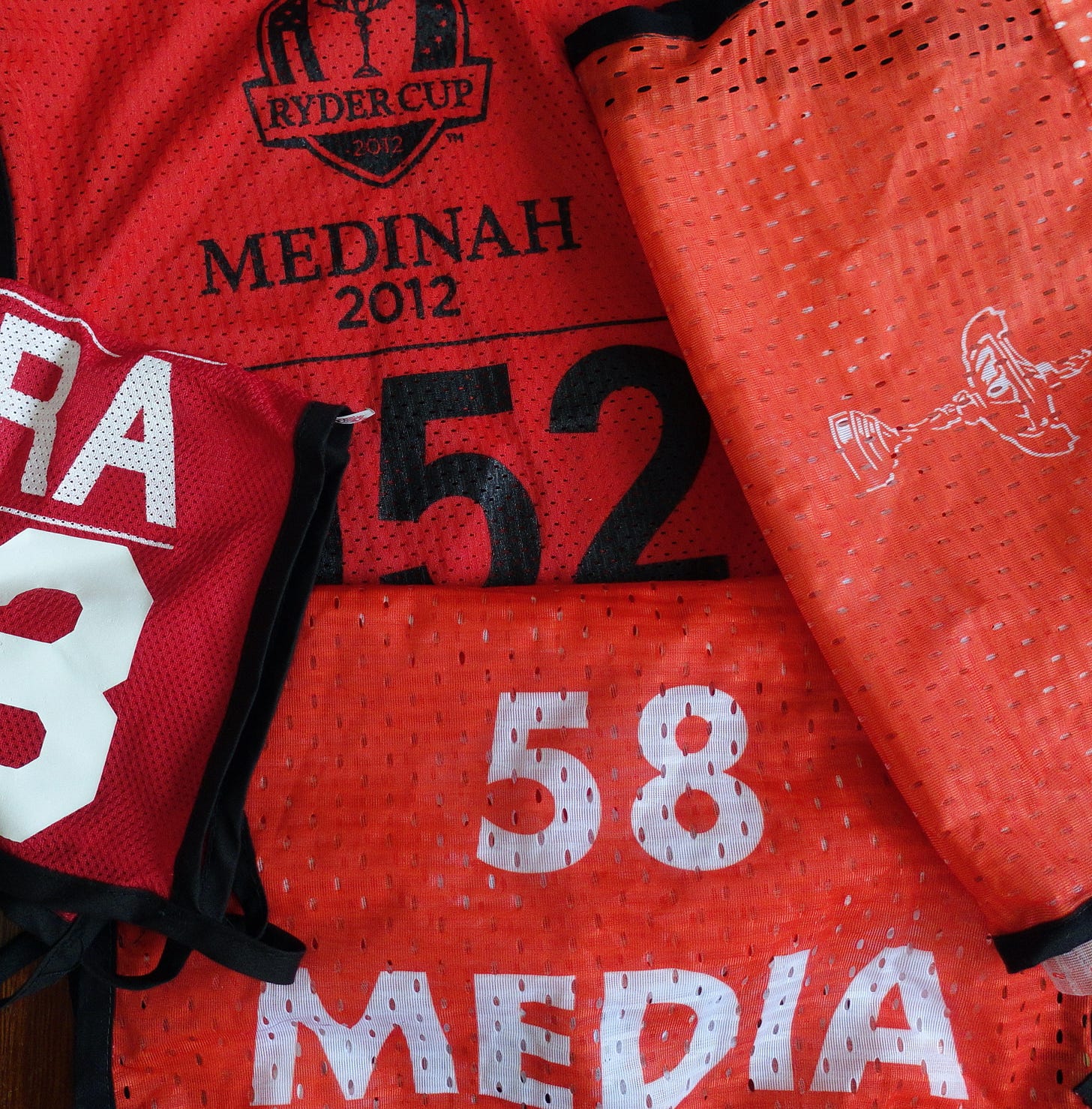This is my 10th Ryder Cup, which means I haven’t been to so many of them that the memories blur beyond recollection. I wouldn’t want to have to come up with, say, the winner of the Per-Ulrik Johansson-Davis Love III singles match in 1997—the media guide informs that the Swede prevailed in Spain, for what it’s worth—but nearly 35 years since I attended my first Ryder Cup, at Muirfield Village in 1987, moments big and small remain fresh in mind.
Golf events are by defined by winners and losers, and the Ryder Cup, despite its origins in goodwill, is no different—especially in the last couple of superheated decades. Elements of who won and who lost in the nine competitions I’ve attended prior to this week’s matches at Whistling Straits, in Wisconsin, are vivid apart from the 2010 Ryder Cup at Celtic Manor.
No one likes to hear journalists gripe about working or living conditions, but that week’s lodging in Wales, at a budget hotel by a motorway, was grim. My room was dark and musty, and I had most dinners at an adjoining restaurant specializing in fried everything. The weather was lousy, as the Americans’ embroidered, leaky rain jackets evidenced, with the conclusion pushed to Monday. By then, outside the ropes, it was as muddy as Woodstock, in 1969, or certainly Bethpage Black, for the 2009 U.S. Open, which is saying something. A pair of shoes didn’t make the trans-Atlantic flight home.
It rained in Spain, too, in 1997, when the Seve Ballesteros-captained Europeans prevailed at Valderrama. After photographing the final day, a couple of us changed out of wet clothes in the parking lot before scrambling to a nearby airport in Gibraltar for a flight to England so we could get Golf World’s film color film processed prior to a flight home on Monday. The rental house that week stood out—a large, well- appointed home with lots of windows, none of them accompanied by screens, which seemed unusual for a residence in that region. There were plug-in bug zappers, but those didn’t deter an army of ants that a colleague found in his bed after returning from the course one day. Given that I had recently received a series of rabies shots after encountering a bat while taking out the trash at dusk at home in Connecticut, I slept with an eye open all week worried about little flying mammals on the other side of the Atlantic.
The joy shown by the Europeans after winning in 1987, in Jack Nicklaus’ hometown, at Jack Nicklaus’ course, over a Jack Nicklaus-captained United States team, is indelible. They formed a chorus line on the 18th green and were kicking up their heels after the victory, Europe’s first on American soil following its first overall triumph since 1957 two years prior. It was Nicklaus who in the 1970s had championed for the Great Britain and Ireland squad to be expanded to include Europe. The expansion dramatically altered the DNA of the competition, with the biennial country vs. continent tussle turning into compelling drama to rival anything in sports.
Nearly 35 years since that win in Ohio, the Europeans are looking for another victory in America, for their 10th triumph in the last 13 Ryder Cups. On paper, the U.S. is younger and better, if world rankings matter. Europe has experience on its side. One stat makes sense, given that the U.S. has six Ryder Cup rookies and Sergio Garcia is playing in as many of these as I’ve covered, but it still stuns. Garcia’s 25½ career points won equals the all-time total of America’s dozen-man team. Analytics increasingly seem to matter in how the teams prepare, pair and otherwise compete, but despite the telling numbers, Ryder Cup outcomes are affected by intangibles best labeled “rising to the occasion.” It goes for fans as well as golfers.
There won’t be very many European spectators at Whistling Straits because of travel restrictions related to the pandemic. We will miss their costumes and their chants. Three years ago, in a Paris suburb, Tommy Fleetwood and Francesco Molinari played so well—going a historic 4-0-0 the first two days to lead Europe to a seven-point victory—supporters adapted a 1990s dance anthem to support the darling duo in song.
Tommy, Tommy Fleetwood … Moli, Molinari
The words and the beat filled Le Golf National and elsewhere. Because it could be reached on foot from the hotel, was open late, tables were available and the food was tasty, I ate several evenings at a restaurant in Meudon called Hippopotamus. It is a chain steakhouse but seemed to me a French version of a fancy diner. After Poulet Roti on Saturday evening, we were finishing our wine when Brits filling an adjacent table for eight burst into the Moliwood tune, once and again, having the best time, as other European fans in the place joined them. Spectators in golf can cross the line, but this was a case of spontaneous joy spawned by sport. If, come Saturday night in Wisconsin, American diners are singing an ode to their team, it could mean the U.S. golfers won’t be singing the blues on Sunday at another Ryder Cup.
I’ll be posting thoughts from Whistling Straits Saturday and Sunday mornings for paid subscribers to The Albatross with an essay for everyone on Monday.



